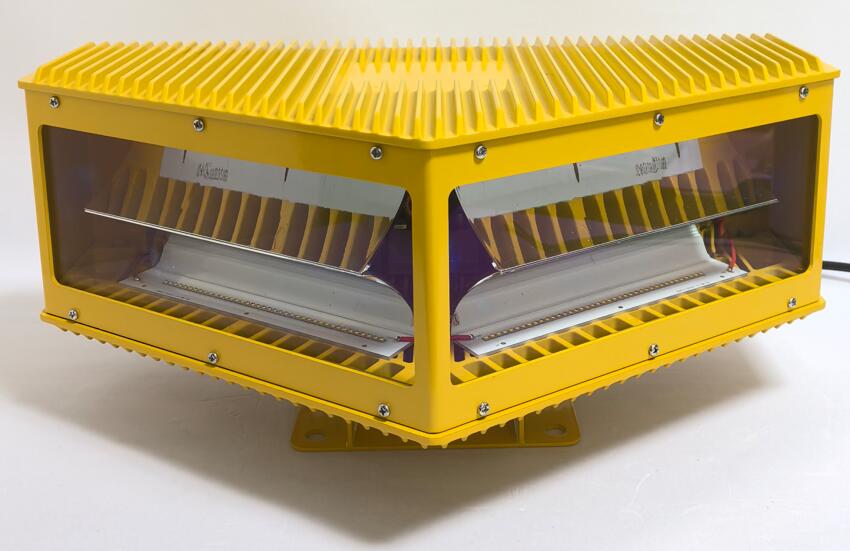High Intensity Aviation Obstruction Light: Ensuring Safety in Modern Skies
The rapid expansion of urban infrastructure and the increasing number of tall structures—such as skyscrapers, wind turbines, and telecommunication towers—have made aviation safety a critical concern. To mitigate collision risks, high intensity aviation obstruction lights play a pivotal role in ensuring that aircraft pilots can identify and avoid obstacles, especially during low-visibility conditions. These lights are essential for compliance with international aviation regulations and enhancing airspace safety.
The Importance of High Intensity Aviation Obstruction Lights
Aviation obstruction lights are categorized based on their intensity, with high intensity aviation obstruction lights being the most powerful. They are typically installed on structures exceeding 500 feet (152 meters) in height, where their bright, flashing signals can be seen from great distances.
Key benefits include:
Enhanced Visibility: Their powerful beams ensure that obstacles are detectable even in adverse weather conditions like fog, rain, or snow.

Regulatory Compliance: Aviation authorities, including the FAA (Federal Aviation Administration) and ICAO (International Civil Aviation Organization), mandate their use on tall structures.
Collision Prevention: By providing clear visual cues, they help pilots maintain safe distances from potential hazards.
| high intensity aviation obstruction light |
Technical Specifications and Functionality
High intensity aviation obstruction lights are designed to meet strict performance standards. Key features include:
1. Light Intensity and Color
White Strobes: These are the most common, emitting intense flashes (typically 2000 candelas or more).
Red Beacons: Used in combination with white strobes for medium-intensity applications.
2. Flash Patterns
Standardized flash sequences ensure that pilots can distinguish obstruction lights from other navigational aids. Common patterns include:
40 flashes per minute for high-intensity white strobes.
20-60 flashes per minute for medium-intensity red beacons.
| high intensity aviation obstruction lights |
3. Durability and Weather Resistance
Given their exposure to harsh environmental conditions, these lights are built with:
Corrosion-resistant materials (e.g., aluminum, polycarbonate).
IP66 or higher ratings for waterproof and dustproof performance.
Wide operating temperature ranges (-40°C to +60°C).
4. Energy Efficiency
Modern high intensity aviation obstruction lights utilize LED technology, offering:
Lower power consumption compared to traditional xenon strobes.
Longer lifespan (up to 100,000 hours).
Reduced maintenance costs due to fewer replacements.
Applications of High Intensity Aviation Obstruction Lights
These lights are indispensable across multiple industries:
1. Wind Energy
Wind turbines, often located in remote or offshore areas, require high intensity aviation obstruction lights to alert low-flying aircraft and helicopters.
2. Telecommunications
Cell towers and broadcast antennas must comply with aviation lighting regulations to prevent accidents.
3. Skyscrapers and Urban Infrastructure
As cities grow vertically, tall buildings must integrate obstruction lighting systems to ensure safe air traffic navigation.
4. Airports and Helipads
Even within airport zones, certain structures (e.g., control towers, hangars) may require obstruction lighting to prevent collisions.
Regulatory Standards and Compliance
Different regions enforce specific guidelines for obstruction lighting:
FAA (USA): AC 70/7460-1K outlines requirements for light intensity, placement, and synchronization.
ICAO (Global): Annex 14 provides international standards for aerodrome and obstacle lighting.
EASA (Europe): CS-ADR-DSN specifies lighting requirements for European airspace.
Non-compliance can lead to legal penalties and increased accident risks, making proper installation and maintenance crucial.
Future Trends in Obstruction Lighting
Advancements in technology continue to shape the evolution of high intensity aviation obstruction lights:
Smart Lighting Systems: Integration with IoT for remote monitoring and fault detection.
Solar-Powered Solutions: Sustainable options for off-grid installations.
Adaptive Lighting: Adjusting intensity based on ambient visibility conditions to reduce light pollution.
High intensity aviation obstruction lights are a cornerstone of modern aviation safety, ensuring that tall structures remain visible to pilots at all times. With advancements in LED technology and smart monitoring, these systems are becoming more efficient and reliable than ever. As urban and industrial growth continues, adherence to regulatory standards and the adoption of cutting-edge lighting solutions will remain essential for safeguarding our skies.
By prioritizing proper installation, maintenance, and innovation, industries can contribute to a safer and more collision-free airspace for generations to come.
